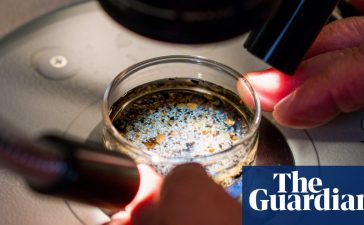The face of a 75,000-year-old female Neanderthal has been recreated from the shattered pieces of her skull in a new Netflix documentary.
The programme follows a team of archaeologists from the University of Cambridge and Liverpool John Moores, revealing how they recreated her face from hundreds of bone fragments after it was flattened.
The woman, who was discovered in Iraqi Kurdistan in 2018, is called Shanidar Z. She was found in a cave where the species repeatedly returned to lay their dead to rest. It was first made famous by work in the late 1950s that unearthed several Neanderthals which appeared to have been buried in succession.
The new documentary, called Secrets Of The Neanderthals, follows the team as they return to Shanidar cave to continue excavations.
Dr Emma Pomeroy, a palaeo-anthropologist from Cambridge’s department of archaeology said: ‘The skulls of Neanderthals and humans look very different.
‘Neanderthal skulls have huge brow ridges and lack chins, with a projecting midface that results in more prominent noses. But the recreated face suggests those differences were not so stark in life.’
The head had shattered after it had been crushed, which the researchers suggested could have been done by rockfall shortly after her death. By the time the researchers found it, the skull was flattered to around two centimetres due to it being buried by sediment.
Researchers think the find could be the top half of an individual uncovered in 1960.
The recreation of the skull suggests that Shanidar Z was an older female, with her teeth giving her age away – with wear and tear showing some teeth worn down to the root.
She is also thought to have been around five feet tall, and has some of the smallest adult arm bones in the Neanderthal fossil record.
When back at the lab, lead conservator Dr Lucía López-Polín pieced together more than 200 bits of skull freehand to return it to its original shape, including the upper and lower jaws.
Dr Pomeroy said: ‘Each skull fragment is gently cleaned while glue and consolidant are re-added to stabilise the bone, which can be very soft, similar in consistency to a biscuit dunked in tea.’
‘It’s like a high-stakes 3D jigsaw puzzle. A single block can take over a fortnight to process.’
Site analysis suggests that Shanidar Z was laid to rest in a gully formed by running water that had been further hollowed out by hand to accommodate the body.
Her posture suggests she had been leant against the side, with her left hand curled under her head, and a rock behind the head like a small cushion, which may have been placed there.
Professor Graeme Barker, who leads the excavations at the cave, said: ‘Shanidar Cave was used first by Neanderthals and then by our own species, so it provides an ideal laboratory to tackle one of the biggest questions of human evolution.
‘Why did Neanderthals disappear from the stage around the same time as Homo sapiens spread over regions where Neanderthals had lived successfully for almost half a million years?’
Secrets Of The Neanderthals will launch on Netflix worldwide at 8am on Thursday, May 2
MORE : Cancer jab marks huge breakthrough in battle against deadly brain tumours
MORE : Lab mice are getting their own back by deliberately messing up experiments
Get your need-to-know
latest news, feel-good stories, analysis and more
This site is protected by reCAPTCHA and the Google Privacy Policy and Terms of Service apply.














